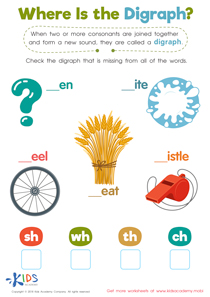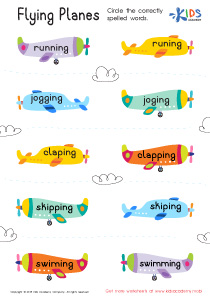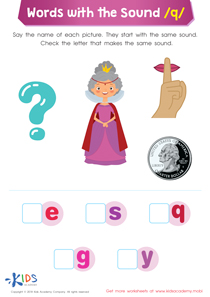Consonant Blends Worksheets for Ages 6-9
6 filtered results
-
From - To
Explore our engaging Consonant Blends Worksheets, specially designed for children aged 6-9! These interactive activities help young learners master the crucial skill of blending consonants to enhance their reading and writing abilities. Our worksheets feature fun exercises that promote phonetic awareness and vocabulary building through captivating illustrations and hands-on practice. Each age-appropriate resource encourages creativity and learning through activities like matching, filling in the blanks, and sorting blends. Perfect for reinforcing lessons in the classroom or at home, our consonant blends worksheets will spark your child's enthusiasm for language, setting the foundation for lifelong literacy skills. Unlock the joy of learning today!
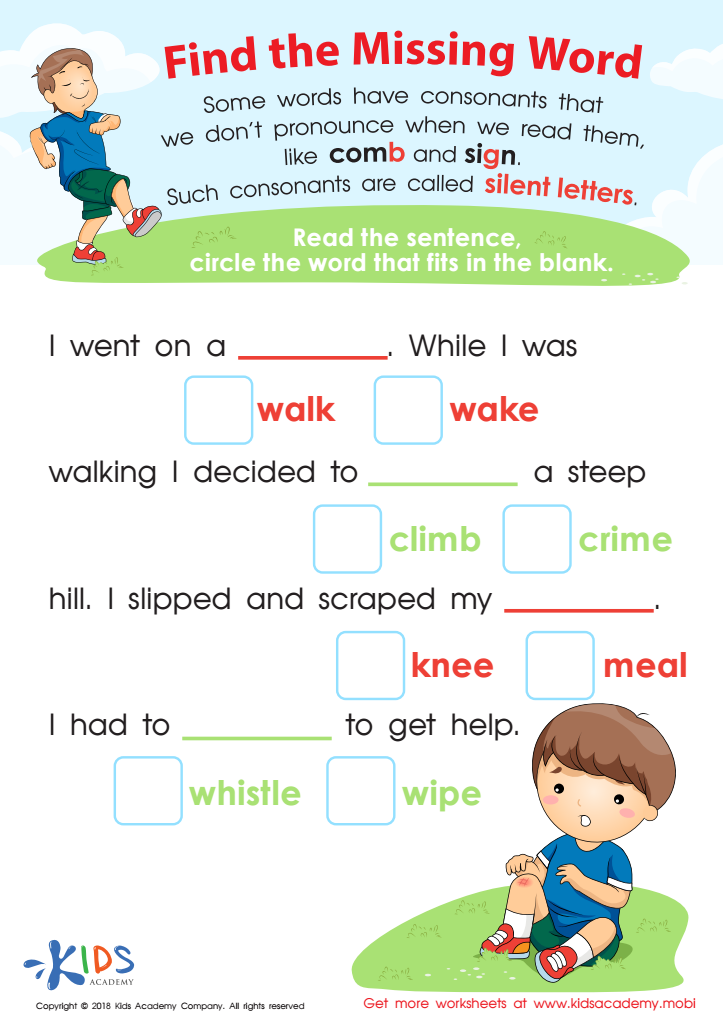

Find The Missing Word Worksheet
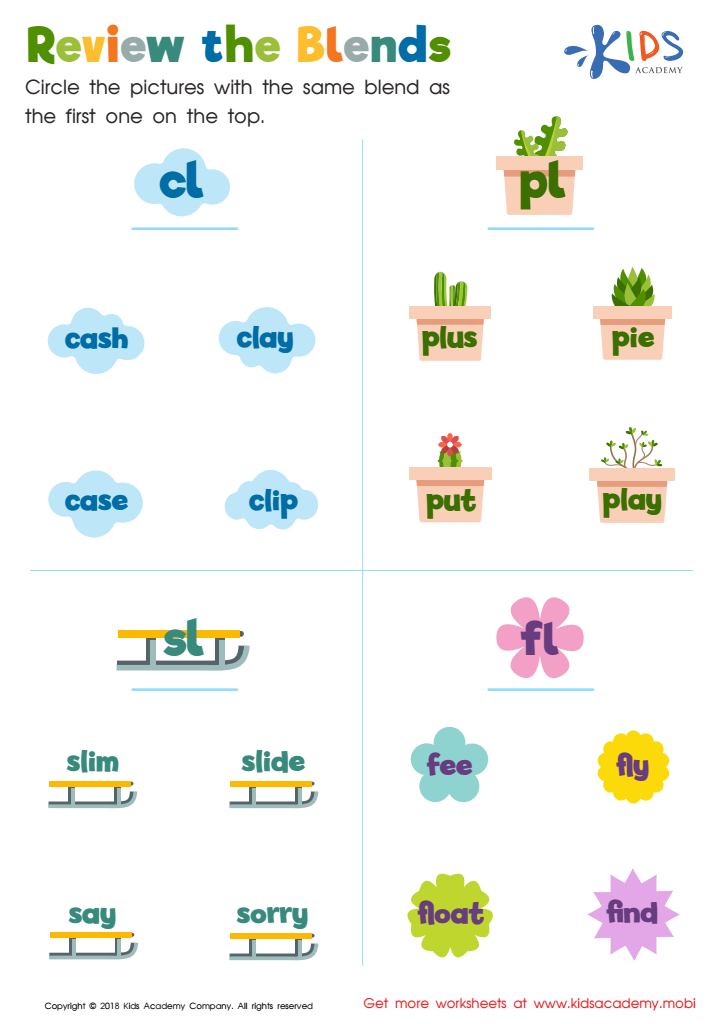

Review the Blends Worksheet
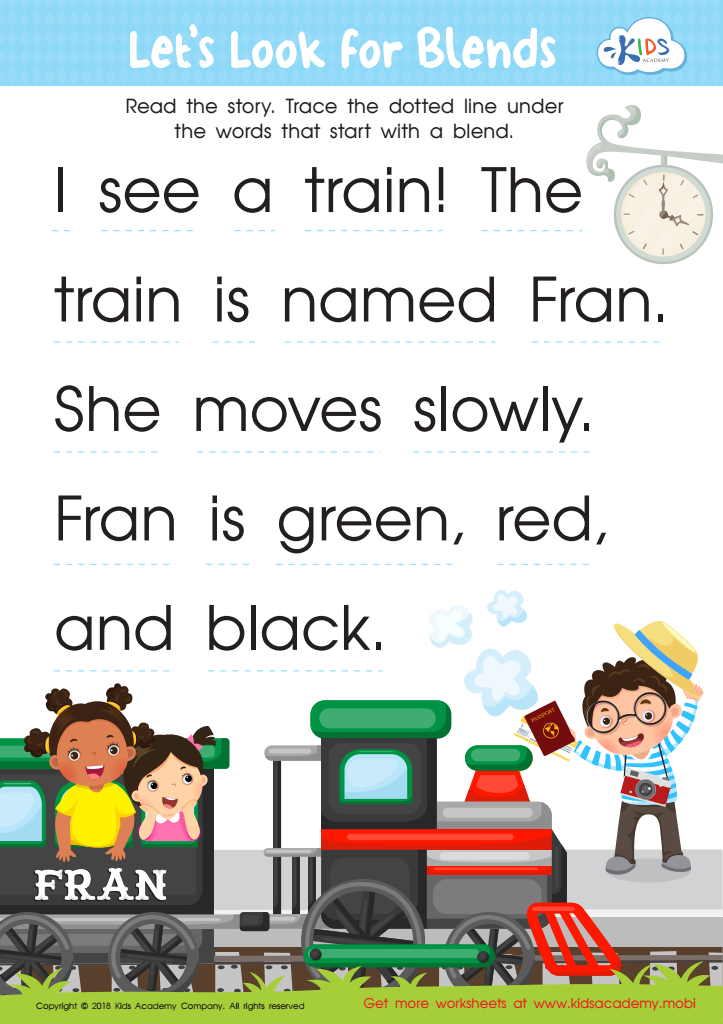

Let's Look for Blends Worksheet
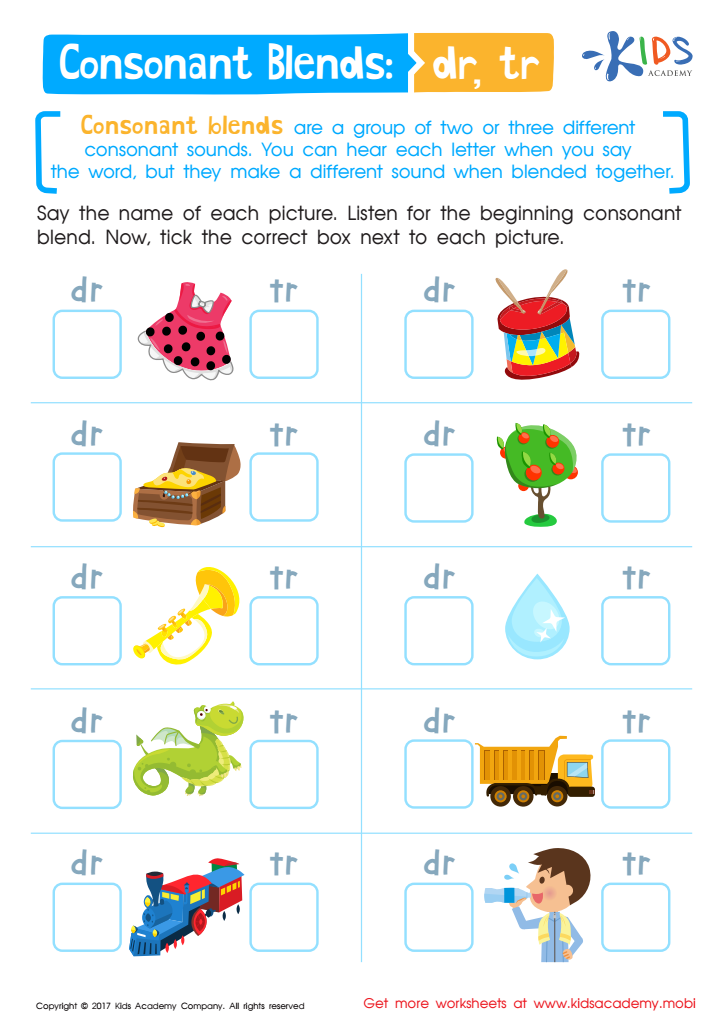

Consonant Blends: "Dr" and "Tr" Printable
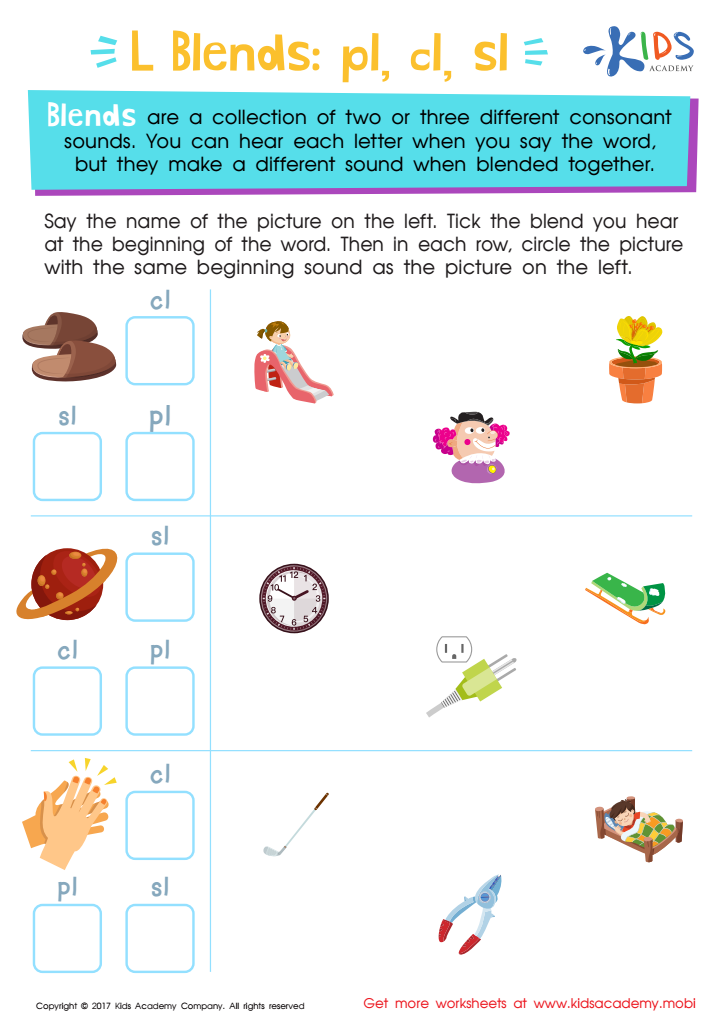

L Blends: "Pl", "Cl" and "Sl" Printable
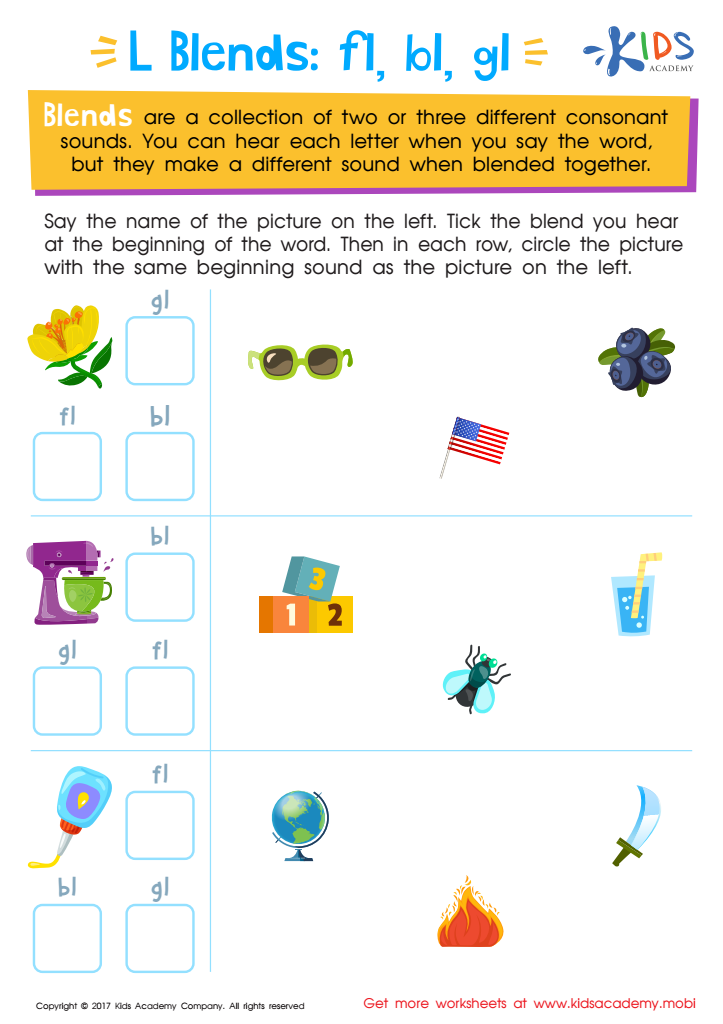

Blending Consonants: "Fl", "Bl" and "Gl" Printable
Understanding consonant blends is essential for children aged 6-9 as it significantly impacts their reading and writing development. Consonant blends are groups of two or more consonants that appear together in words, where each sound is still heard. For instance, in the word "spring," the “sp” blend allows children to decode and pronounce more complex words confidently.
Parents and teachers should prioritize consonant blends because they serve as building blocks for literacy skills. Recognizing and articulating these blends enhances phonemic awareness, a critical component of effective reading. When children grasp consonant blends, they can tackle a broader range of vocabulary, leading to increased comprehension and fluency.
Moreover, a strong foundation in blends aids in spelling since children can segment words into recognizable sound patterns. This skill fosters confidence, enabling children to express themselves more freely in writing.
Additionally, mastering blends can prevent future reading difficulties, setting students on a path to academic success. As children connect sounds with letters, they develop a love for reading, enhancing their overall educational experience. Therefore, investing time in teaching and practicing consonant blends is vital for nurturing proficient and enthusiastic readers.

 Assign to My Students
Assign to My Students









